You probably have heard about the terms “waterproof” or “water-resistant” on some expensive electronic gadgets like Android Phones, iPhones, smartwatches, fitness trackers, etc. But do you know what do these terminologies actually mean & how do these work for the gadgets? If you don’t, read the full article where I have explained the facts behind what these really mean and how they work. Now the actual fact is, waterproof is not water-resistant. The two terms are a little bit different from each other. Waterproof means Normal water never gets into the devices & water-resistant means normal water may get into the devices but in a few conditions. Basically, These depend on IP rating or IP code & ATM rating. In Android devices, iPhones, the IP rating defines their resistance to water. In smartwatches & fitness trackers, there is an ATM rating that makes definitions of how waterproof the device would be.
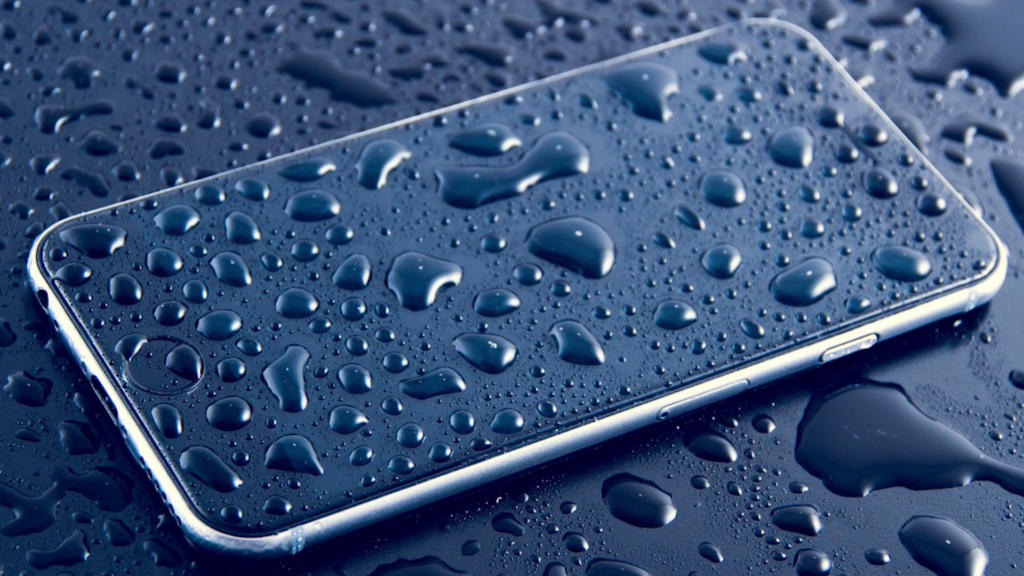
What is IP rating?
The full form of IP rating is International Protection rating & sometimes used as Ingress Protection. As I wrote earlier in this article that IP rating defines the level of waterproofing as well as dust-proofing in the smartphones. Those IP ratings are tested and certified by the manufacturers. So, the various IP rated devices come with different resistance from water and dust.
Normally, IP rating designations are given in the format of “IPXY”. X is the international protection rating for physical ingress everything from dust particles to finger penetrations whereas Y is the international protection rating for liquid Ingress which actually defines the condition of the smartphone from floating to deep submersion in the water. As an example, if any phone is rated IP68 that means this rating has passed all the six physical ingress levels as well as the first eight liquid ingress levels.
Now, let’s take a quick look at the following tables to know both the values of the IP rating. The following table is the IP rating table of physical ingress protection.
| LEVEL | OBJECT SIZE PROTECTED AGAINST | EFFECTIVE AGAINST |
|---|---|---|
| 0 | _ | No protection against contact and ingress of objects |
| 1 | >50 mm | Any large surface of the body, such as the back of a hand, but no protection against deliberate contact with a body part |
| 2 | >12.5 mm | Fingers or similar objects |
| 3 | >2.5 mm | Tools, thick wires, etc. |
| 4 | >1 mm | Most wires, screws, etc. |
| 5 | Dust protected | Ingress of dust is not entirely prevented, but it must not enter in sufficient quantity to interfere with the satisfactory operation of the equipment; complete protection against contact (dust proof) |
| 6 | Dust tight | No ingress of dust; complete protection against contact (dust tight ) |
Now, there is another similar & detailed table that describes the IP rating of the liquid ingress protection to see how IP rated your phone is from water and other liquids so that you will be careful about your smartphone.
| LEVEL | PROTECTED AGAINST | TESTING FOR | DETAILS | |||||||
|---|---|---|---|---|---|---|---|---|---|---|
| 0 | Not protected | _ | _ | |||||||
| 1 | Dripping water | Dripping water (vertically falling drops) shall have no harmful effect. | Test duration: 10 min. Water equivalent to 1 mm rainfall per min. | |||||||
| 2 | Dripping water when tilted up to 15° | Vertically dropping water shall have no harmful effect when the enclosure is tilted at an angle up to 15° from it’s normal position. | Test duration: 10 min. Water equivalent to 3 mm rainfall per min. | |||||||
| 3 | Spraying water | Water falling at a spray at any angle up to 60% to vertical shall have no harmful effect. | Test duration: 5 min. Water volume: 0.7 litres per min. Pressure: 80-100 kPa | |||||||
| 4 | Splashing of water | Water splashing against the enclosure from any direction shall have no harmful effect. | Test duration: 5 min. Water volume: 10 litres per min. Pressure: 80-100 kPa | |||||||
| 5 | Water jets | Water projected by a nozzle (6.3 mm) against enclosure from any direction shall have no harmful effects. | Test duration: At least 3 min. Water volume: 12.5 litres per min. Pressure: 30 kPa at distance of 3 m | |||||||
| 6 | Powerful water jets | Water projected in powerful jets (12.5 mm nozzle) against enclosure from any direction shall have no harmful effects. | Test duration: At least 3 min. Water volume: 100 litres per min. Pressure: 100 kPa at distance of 3 m | |||||||
| 6K | Powerful water jets with increased pressure | Water projected in powerful jets (6.3 mm nozzle) against enclosure from any direction, under elevated pressure, shall have no harmful effects. | Test duration: At least 3 min. Water volume: 75 litres per min. Pressure: 1000 kPa at the distance of 3 m | |||||||
| 7 | Immersion up to 1 m | Ingress of water in harmful quantity shall not be possible when the enclosure is immersed in water under defined conditions of pressure and time (up to 1 m of submersion). | Test duration: 30 min. The lowest point of enclosures with a height less than 850 mm is located 1000 mm below the surface of the water, the highest point of enclosures with a height equal to or greater than 850 mm is located 150 mm below the surface of the water. | |||||||
| 8 | Immersion beyond 1 m | The equipment is suitable for continuous immersion in water under conditions which shall be specified by the manufacturer. However, with certain types of equipment, it can mean that water can enter but only in such a manner that it produces no harmful effects. | Test duration: continuous immersion in water depth specified by manufacturer, generally up to 3 m | |||||||
| 9K | Powerful high temperature water jets | Protected against close-range high pressure, high temperature spray downs. | _ | |||||||
These two charts will help you to determine the IP rating of your smartphone type gadgets. For example, if you have a phone with the ingress protection of IP67 that means this phone is totally dust-tight and also can tolerate the immersion up to one meter of water. If you’re too lazy to check the above tables, you should better try the table below to know about your phone’s IP rating and it’s the power of protection.
| IP Number | First Digit - SOLIDS | Second Digit - LIQUIDS |
|---|---|---|
| IP00 | Not protected from solids. | Not protected from liquids. |
| IP01 | Not protected from solids. | Protected from condensation. |
| IP02 | Not protected from solids. | Protected from water spray less than 15 degrees from vertical. |
| IP03 | Not protected from solids. | Protected from water spray less than 60 degrees from vertical. |
| IP04 | Not protected from solids. | Protected from water spray from any direction. |
| IP05 | Not protected from solids. | Protected from low pressure water jets from any direction. |
| IP06 | Not protected from solids. | Protected from high pressure water jets from any direction. |
| IP07 | Not protected from solids. | Protected from immersion between 15 centimeters and 1 meter in depth. |
| IP08 | Not protected from solids. | Protected from long term immersion up to a specified pressure. |
| IP10 | Protected from touch by hands greater than 50 millimeters. | Not protected from liquids. |
| IP11 | Protected from touch by hands greater than 50 millimeters. | Protected from condensation. |
| IP12 | Protected from touch by hands greater than 50 millimeters. | Protected from water spray less than 15 degrees from vertical. |
| IP13 | Protected from touch by hands greater than 50 millimeters. | Protected from water spray less than 60 degrees from vertical. |
| IP14 | Protected from touch by hands greater than 50 millimeters. | Protected from water spray from any direction. |
| IP15 | Protected from touch by hands greater than 50 millimeters. | Protected from low pressure water jets from any direction. |
| IP16 | Protected from touch by hands greater than 50 millimeters. | Protected from high pressure water jets from any direction. |
| IP17 | Protected from touch by hands greater than 50 millimeters. | Protected from immersion between 15 centimeters and 1 meter in depth. |
| IP18 | Protected from touch by hands greater than 50 millimeters. | Protected from long term immersion up to a specified pressure. |
| IP20 | Protected from touch by fingers and objects greater than 12 millimeters. | Not protected from liquids. |
| IP21 | Protected from touch by fingers and objects greater than 12 millimeters. | Protected from condensation. |
| IP22 | Protected from touch by fingers and objects greater than 12 millimeters. | Protected from water spray less than 15 degrees from vertical. |
| IP23 | Protected from touch by fingers and objects greater than 12 millimeters. | Protected from water spray less than 60 degrees from vertical. |
| IP24 | Protected from touch by fingers and objects greater than 12 millimeters. | Protected from water spray from any direction. |
| IP25 | Protected from touch by fingers and objects greater than 12 millimeters. | Protected from low pressure water jets from any direction. |
| IP26 | Protected from touch by fingers and objects greater than 12 millimeters. | Protected from high pressure water jets from any direction. |
| IP27 | Protected from touch by fingers and objects greater than 12 millimeters. | Protected from immersion between 15 centimeters and 1 meter in depth. |
| IP28 | Protected from touch by fingers and objects greater than 12 millimeters. | Protected from long term immersion up to a specified pressure. |
| IP30 | Protected from tools and wires greater than 2.5 millimeters. | Not protected from liquids. |
| IP31 | Protected from tools and wires greater than 2.5 millimeters. | Protected from condensation. |
| IP32 | Protected from tools and wires greater than 2.5 millimeters. | Protected from water spray less than 15 degrees from vertical. |
| IP33 | Protected from tools and wires greater than 2.5 millimeters. | Protected from water spray less than 60 degrees from vertical. |
| IP34 | Protected from tools and wires greater than 2.5 millimeters. | Protected from water spray from any direction. |
| IP35 | Protected from tools and wires greater than 2.5 millimeters. | Protected from low pressure water jets from any direction. |
| IP36 | Protected from tools and wires greater than 2.5 millimeters. | Protected from high pressure water jets from any direction. |
| IP37 | Protected from tools and wires greater than 2.5 millimeters. | Protected from immersion between 15 centimeters and 1 meter in depth. |
| IP38 | Protected from tools and wires greater than 2.5 millimeters. | Protected from long term immersion up to a specified pressure. |
| IP40 | Protected from tools and small wires greater than 1 millimeter. | Not protected from liquids. |
| IP41 | Protected from tools and small wires greater than 1 millimeter. | Protected from condensation. |
| IP42 | Protected from tools and small wires greater than 1 millimeter. | Protected from water spray less than 15 degrees from vertical. |
| IP43 | Protected from tools and small wires greater than 1 millimeter. | Protected from water spray less than 60 degrees from vertical. |
| IP44 | Protected from tools and small wires greater than 1 millimeter. | Protected from water spray from any direction. |
| IP45 | Protected from tools and small wires greater than 1 millimeter. | Protected from low pressure water jets from any direction. |
| IP46 | Protected from tools and small wires greater than 1 millimeter. | Protected from high pressure water jets from any direction. |
| IP47 | Protected from tools and small wires greater than 1 millimeter. | Protected from immersion between 15 centimeters and 1 meter in depth. |
| IP48 | Protected from tools and small wires greater than 1 millimeter. | Protected from long term immersion up to a specified pressure. |
| IP50 | Protected from limited dust ingress. | Not protected from liquids. |
| IP51 | Protected from limited dust ingress. | Protected from condensation. |
| IP52 | Protected from limited dust ingress. | Protected from water spray less than 15 degrees from vertical. |
| IP53 | Protected from limited dust ingress. | Protected from water spray less than 60 degrees from vertical. |
| IP54 | Protected from limited dust ingress. | Protected from water spray from any direction. |
| IP55 | Protected from limited dust ingress. | Protected from low pressure water jets from any direction. |
| IP56 | Protected from limited dust ingress. | Protected from high pressure water jets from any direction. |
| IP57 | Protected from limited dust ingress. | Protected from immersion between 15 centimeters and 1 meter in depth. |
| IP58 | Protected from limited dust ingress. | Protected from long term immersion up to a specified pressure. |
| IP60 | Protected from total dust ingress. | Not protected from liquids. |
| IP61 | Protected from total dust ingress. | Protected from condensation. |
| IP62 | Protected from total dust ingress. | Protected from water spray less than 15 degrees from vertical. |
| IP63 | Protected from total dust ingress. | Protected from water spray less than 60 degrees from vertical. |
| IP64 | Protected from total dust ingress. | Protected from water spray from any direction. |
| IP65 | Protected from total dust ingress. | Protected from low pressure water jets from any direction. |
| IP66 | Protected from total dust ingress. | Protected from high pressure water jets from any direction. |
| IP67 | Protected from total dust ingress. | Protected from immersion between 15 centimeters and 1 meter in depth. |
| IP68 | Protected from total dust ingress. | Protected from long term immersion up to a specified pressure. |
| IP69K | Protected from total dust ingress. | Protected from steam-jet cleaning. |
Now, the main question is…
How do smartphones work as dustproof or waterproof?
We at least know this simple fact that international protection is just a rating but the query is what technology is used to make the smartphones protected? The answer is Rubber Gaskets.

These rubber gaskets are used to protect the phones from any types of harms from water as well as dust. You can notice that rubber gaskets are used on the SIM tray of your android device.
If you wide open your phone physically, you can also notice a rubber gasket used in the micro USB port; if you tell about speakers of your device, then yes, there are also used these types of materials. Rubber gaskets also are used inside the button of the smartphones & even when any smartphone is sealed, these rubber gaskets or any thick glue is used to protect the phone from water.
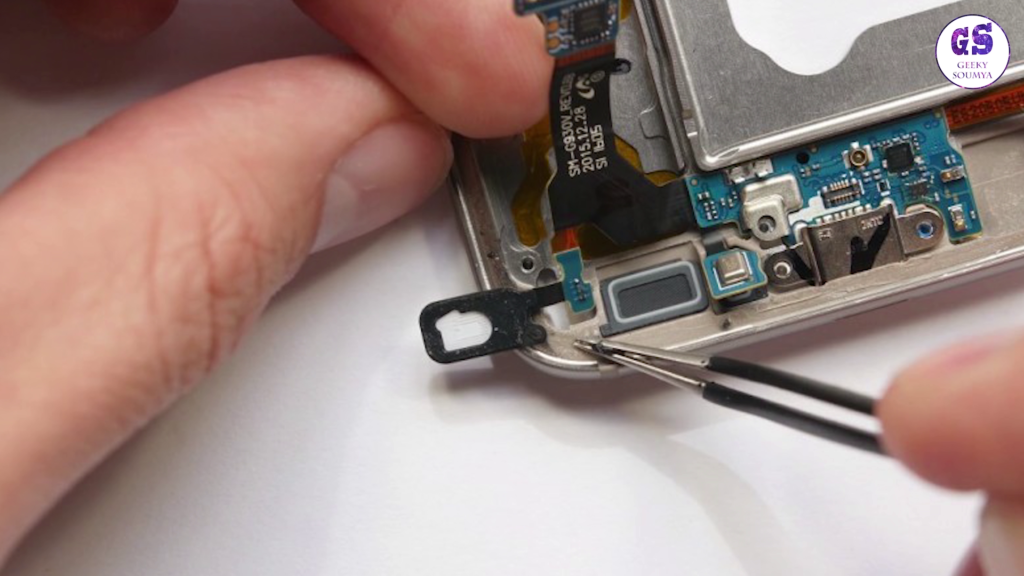
So you can see that in this way every important part of the devices is sealed with the rubber gaskets or these types of materials to protect from any type of water or physical damage & to make the gadgets waterproof as well as dustproof.
Keep Your Smartphones Totally Safe From Water:-
You already have known about IP rating. Now from my concern, some safety points for keeping your Smartphones safe within and without water are as follows –
- For any kind of reason, if you submerge your phone into the water then at that time, don’t press any buttons. Why? Because if you press then the rubber gasket within it may go off and the water may enter your device to damage it.

- The IP rating for smartphones is only for Normal water resistance not for seawater or any other liquids like soft drinks and something else. So it is safe to use your phone in normal water. Don’t go for selfies in seawater because it may be fashionable but the salt in the sea or ocean can damage your phone. So don’t use it in the sea or water something like that.
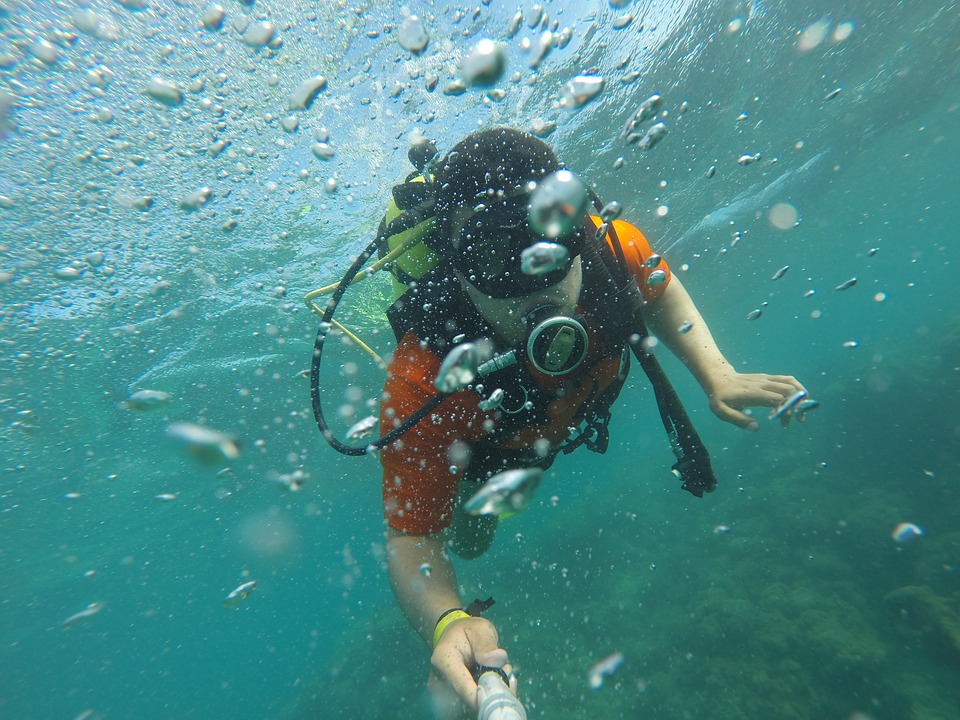
- As I said in the last point that liquid ingress in the IP rating does not mean any types of liquids. Only normal water is suggested. So if your phone sinks into other liquids then it may damage your phone as it can’t endure.
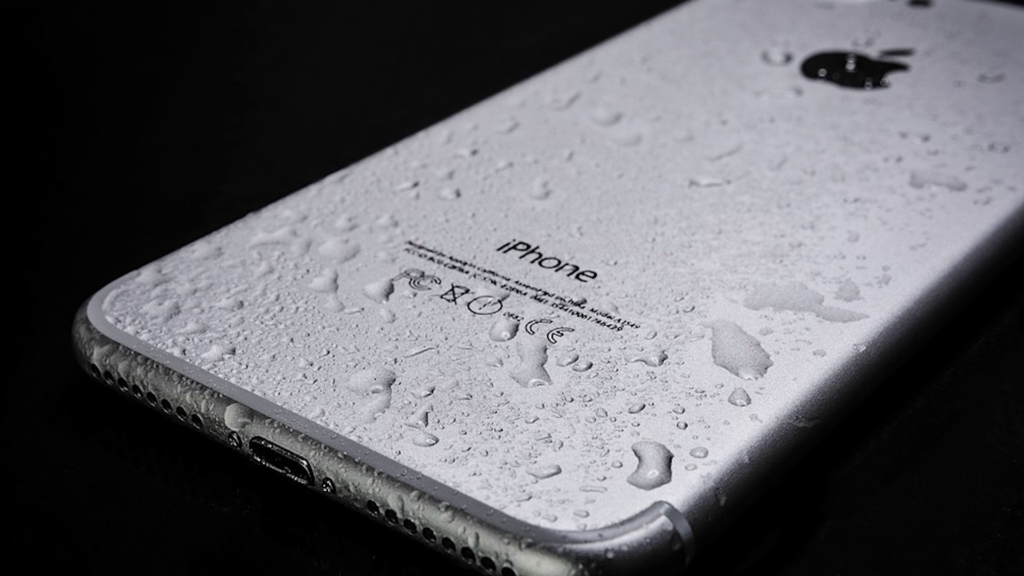
- Another and last safety point is that every IP rating is different from each other. IP68 is not IP65. And also IP67 is not IP54. So suppose if your phone is IP65 that doesn’t mean that it can endure everything that endures IP62. Therefore, observe the above tables carefully to make sure what IP rating your phone has and use it accordingly and also safely.
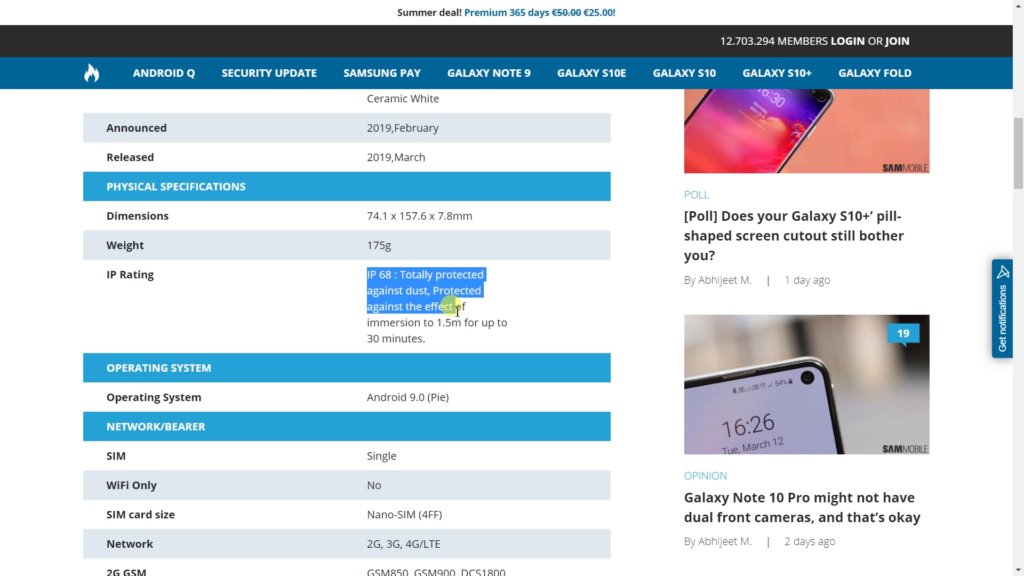
Watch this video f you want to know more about the reasons for Windows phone failure in Hindi:
Read More: What Do 5 ATM & 10 ATM Mean on a Watch?
I hope, you have known all the needed information about “What is IP Rating? IP68, IP67, IP54 Explained”. If any question still remains in your mind, don’t hesitate to comment in the down below.


cool
cool^2